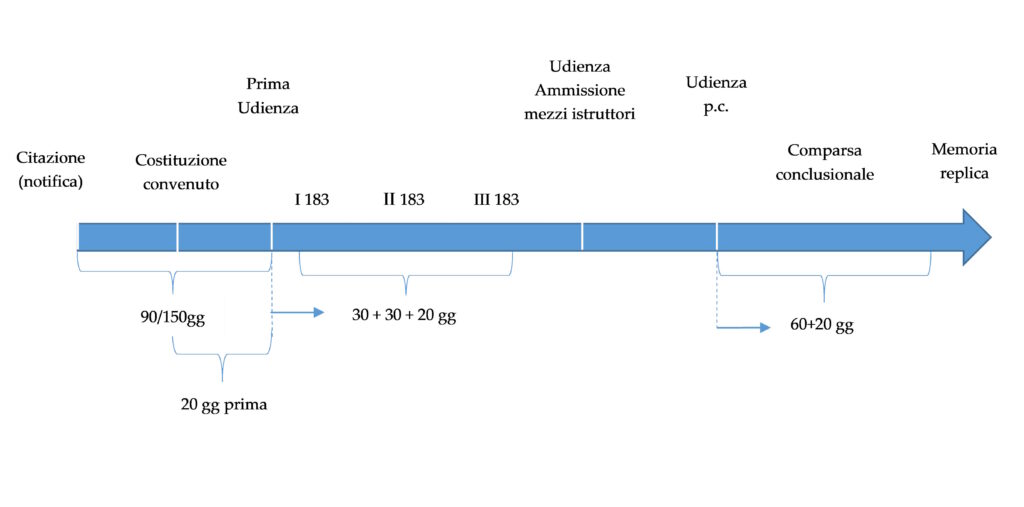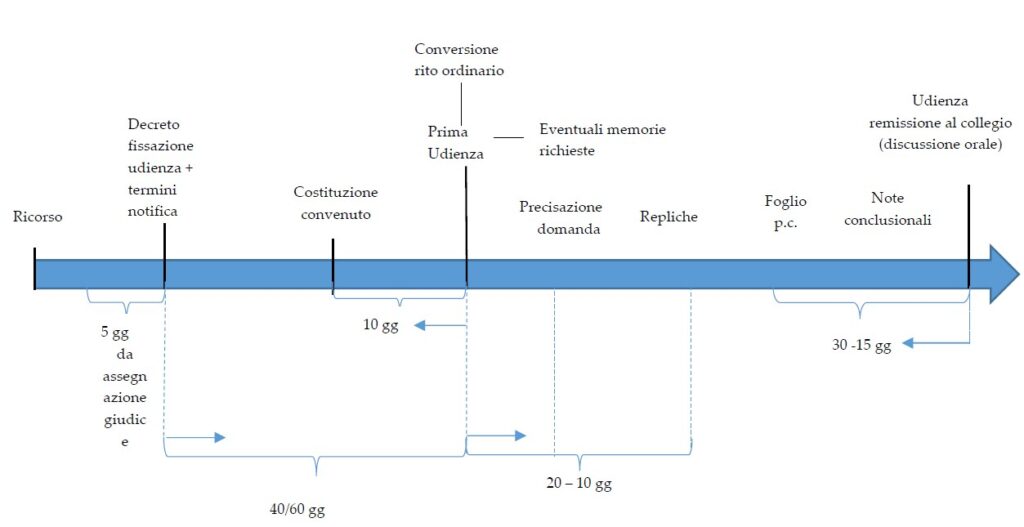The civil procedure Reform and the protection of IP. What changes?
2 The effects of the Cartabia Reform in intellectual property disputes
2.1 Amendments to the ordinary procedure
As already anticipated, the Cartabia Reform affected several fronts and modified few procedural aspects. In this article, we will concentrate only on the rules that can have a direct impact on the cases involving intellectual property rights.
As is known, anyone who wants to have ascertained acts of counterfeiting, with respect to his/her own trademarks, patents and/or designs and/or acts of unfair competition put in place by a competitor, must initiate a judicial action on the merits.
This action is governed by the rules established by the so-called ordinary procedure, which has been subject of an important revision with the Cartabia Reform (kindly see, in particular, articles 163 et seq. and articles 310 et seq. of the Civil Procedure Code).
2.2 The ordinary procedure, before the establishment of the Reform
The pre-reform ordinary procedure was characterized by 3 procedural phases of equal importance. The first (introductory phase) begins with the notification of the summons and ends with the first appearance and discussion hearing. The second is the preliminary phase, marked by the filing of three briefs with which the parties can file evidence and ask for the admission of measures of inquiry. The last is the final or decision-making phase, in which the parties summarize what happened during the trial by filing two conclusive briefs, highlighting the aspects of interest.
The diagram below provides an overview of the ordinary pre-reform procedure (which will remain in force for all the disputes initiated before the entry into force of the Reform):

2.3 The ordinary post-reform procedure
The Cartabia Reform has significantly modified the ordinary procedure in several aspects.
The most relevant amendments concern, first of all, the obligation of the party to personally appear at the first hearing. The reason of this modification is to favour a judicial agreement between the parties, with the help of the Judge.
Other important changes relate to the abbreviation of the terms of defence for the defendant and for the parties in general. The reason evidently lies in the desire to reduce the trial length, even if – to tell the truth – the duration of the trial times does not depend on the defences of the parties, but rather on the scheduling of the hearings. Furthermore, the moment in which the parties must clarify the claims and file the evidence in support has been anticipated to the initial briefs (and therefore within the first hearing).
Below you will find a diagram summarizing the new ordinary procedure in the light of the new legislation:

3 Introduction of the simplified procedure (article 281 decies-terdecies of the Civil Procedure Code)
An absolute novelty is the introduction of the simplified procedure, thus shorter and more streamlined than the ordinary one, which can only be applied if specific requirements are met.
In the context of intellectual property disputes, which are always collective disputes (i.e. decided by a panel of judges and not by a single judge), the simplified procedure can be applied either if the facts of the case are not controversial or if the application is based on written evidence or if the case is a so-called prompt resolution dispute (which does not require an in-depth evidence phase).
Below you will find a diagram summarizing the most relevant phases of the procedure at issue:

Therefore, the simplified procedure could be used above all in cases of trademark infringement and unfair competition, since in these proceedings an official technical appraisal is not usually required (at least with regards to the ascertainment of the conduct, whereas it could be required for the quantification of the damage), and the evidence is mostly made of documents.
Its use is excluded in patent and design infringement cases, which usually require the completion of a technical appraisal.
All in all, analysing the approach of the Courts in the use of this procedure will be interesting, given that at the moment the tendency is to guarantee the cross-examination (which is guaranteed with the ordinary procedure).
4 Further amendments
4.1 Notifications of legal documents and decisions
A certainly positive aspect of the Reform is the introduction of the obligation for lawyers and auxiliaries of the Judge to notify judicial documents and provisions via certified e-mail. This obligation applies if the recipient:
- has the obligation to have a digital domicile (professionals, sole and collective proprietorships, Public Administrations);
- although not required by law, has spontaneously elected digital domicile in the INAD (“Indice Nazionale Domicili Digitali”).
Furthermore, the Reform provides for the hypothesis in which the notification via certified e-mail is not successfully delivered and, in particular:
- If the certified e-mail is not delivered for reasons attributable to the addressee (i.e. the certified e-mail inbox is “full”):
- a) if the addressee is a company or a professional registered in the INI-PEC index (“Indice Nazionale PEC”), the notification is performed by entering the deed to be notified in the private web area regulated by art. 359 of the Codice della Crisi d’Impresa e dell’Insolvenza (“CCII“). In this case, the notification is considered to be executed after 10 days from the insertion.
- b) if the addressee has spontaneously elected domicile in the INAD, the notification is carried out in the ordinary way (by ordinary mail service or through the bailiff).
- If the delivery is not possible or is not successful for reasons not attributable to the addressee (e.g. malfunction of the service), the notification will be sent in the ordinary way (i.e. via UNEP – Ufficio Notificazioni, esecuzioni e protesti – or postal service).
4.2 The appeal
Finally, it is certainly worth mentioning the amendments related to the system of appeal.
With reference to the appeal procedure, the aim is – as usual – the deterrent one and to speed up the proceeding.
From this point of view, since the “filter” on appeal was not very effective for these purposes, it has been eliminated, while the possibility of an oral hearing has been foreseen in specific circumstances. Furthermore, the possibility of adjournment of the case to the Court of first instance has been limited to the sole hypothesis of nullity of the notification and breach of the inter partes principle, or incorrect ouster of the party.
With regards to the Court of Cassation (Supreme Court), the appeal based on the omitted examination of a decisive fact is now precluded in the event that the two previous decisions are consistent in terms of facts and reasons. Moreover, the filter procedure has been speeded up, and it has been established that, if the Judge of the Filter Section recognizes the subsistence of the evident groundlessness or inadmissibility, he/she will communicate it to the parties, who will be able to opt for the council chamber, namely to waive the appeal.
5 Conclusions
In light of the above, some of the adopted measures are positively accepted and will certainly facilitate the completion of the trial, and should also be able to speed up the ancillary operations to the establishment of the trial (e.g. the notifications and the elimination of the hearing to clarify the conclusions). Doubts remain for other choices of the legislator (such as, for example, the obligation of the party to personally participate at the first hearing).
With regards to intellectual property matters, the use of the simplified procedure could be interesting. With reference to the ordinary procedure, the substantial amendments that have been brought forth are not likely to have a significant impact on the current situation.

